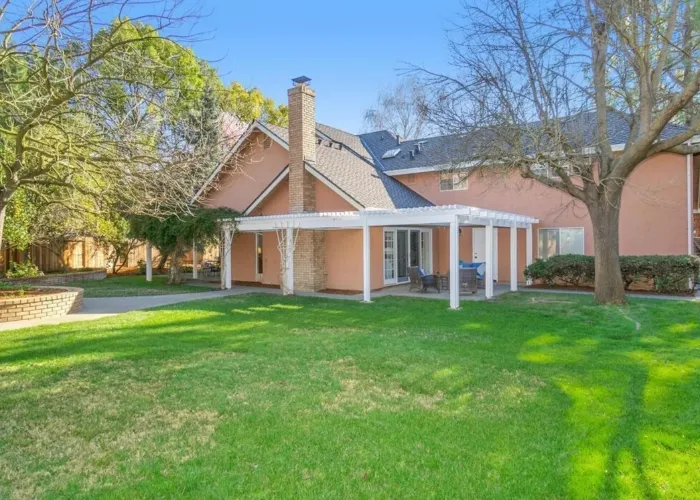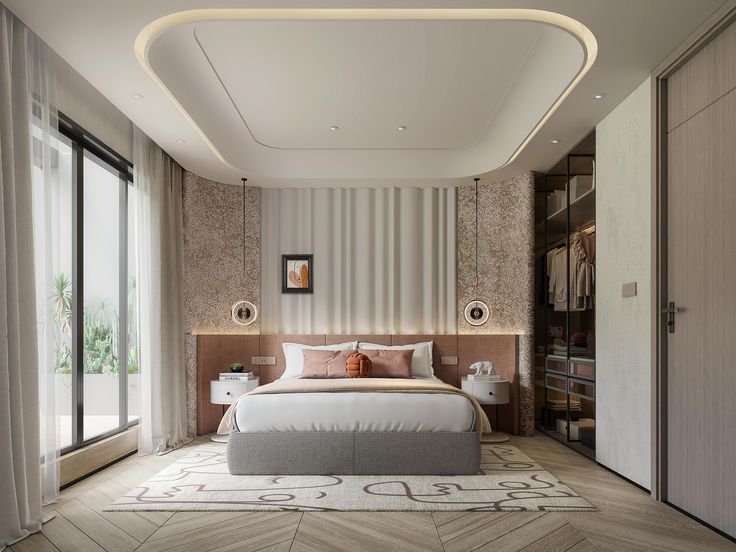Kids Toy Room Ideas: Transforming Playtime into a World of Imagination

Designing a toy room is more than filling a space with toys—it’s about creating an environment that nurtures imagination, organization, and joy. A thoughtfully designed playroom encourages creativity, keeps clutter under control, and becomes a cherished place for your child to learn and grow. Whether you have a large spare room or a small corner to transform, these kids toy room ideas will help you design a fun, functional, and stylish space your little one will adore.
1. Setting the Scene: Defining Your Toy Room’s Purpose
Before you start decorating, identify the toy room’s main purpose. Is it meant solely for play, or will it also serve as a study or reading area? For toddlers, you’ll want open floor space and soft materials. For older kids, add storage for games, crafts, and books. A clear vision ensures the room fits your child’s age, personality, and interests while staying functional for years to come.
2. Smart Space Planning: Making the Most of Every Corner
Space planning is key to designing a toy room that feels open and organized. Use every inch wisely—especially if space is limited.
- Go vertical: Install wall shelves and cubbies to keep the floor clear.
- Think multi-functional: A storage bench can double as seating.
- Create play zones: Use rugs or furniture placement to define areas for different activities.
These small adjustments maximize usability and make cleanup time easier for everyone.
3. Color Psychology: Choosing Hues That Spark Joy and Calm
Color shapes how kids feel and behave in a space. Bright primary colors—red, blue, yellow—can energize and inspire creativity, while softer tones like sage green, blush, or sky blue create calm and focus.
A great approach is to combine both: use neutral or pastel walls as a backdrop and add color pops through furniture, rugs, and wall art. This balance keeps the room lively yet soothing.
4. Creative Themes: From Jungle Adventures to Space Missions
Themes bring the toy room to life and ignite your child’s imagination. A few timeless favorites include:
- Jungle Safari: Use leafy wallpaper, plush animals, and earthy greens.
- Outer Space: Glow-in-the-dark stars, rocket shelves, and cosmic prints.
- Ocean Adventure: Blue waves, sea creature decals, and coral-inspired décor.
- Superhero or Princess World: Dress-up stations and character-themed corners.
Stick with flexible décor—removable decals and washable textiles—so you can easily update the theme as your child grows.
5. Clever Storage Solutions: A Place for Every Toy
A beautiful toy room is one where everything has its place. Use open shelving for frequently used toys and closed bins for bulkier items.
- Label bins and baskets to help kids identify where each toy belongs.
- Clear containers make cleanup easier and encourage independence.
- Add rolling carts for art supplies or LEGO collections.
You can even turn storage into play—create a “toy garage” for cars or a “mini market” for pretend shopping.
6. Multi-Functional Furniture: Where Design Meets Play
Smart furniture choices make the toy room both fun and practical.
- Play tables with drawers keep art materials or puzzles organized.
- Ottomans with hidden storage double as seats and toy chests.
- Foldable tents or pop-up playhouses can be stored away easily.
Look for child-safe designs—rounded corners, sturdy materials, and wipeable surfaces ensure both style and safety.
7. Interactive Zones: Dividing the Room for Fun and Learning
Creating zones makes the room more functional and less chaotic. Divide the toy room into sections:
- Reading nook: A beanbag chair, small bookshelf, and soft lamp.
- Art corner: An easel, coloring station, and easy-clean flooring.
- Building area: A table for blocks or model kits.
- Pretend play area: Kitchen sets, dolls, or costumes.
Zoning helps children transition between play types and fosters organization naturally.
8. Display Magic: Showcasing Toys and Art Creatively
Toys don’t have to be hidden away—many can become beautiful décor pieces. Use floating shelves to display favorite figurines or wooden toys. Install pegboards to hang craft tools or dress-up items.
To make the space more personal, showcase your child’s artwork in simple frames or clipboards. Rotating the display keeps it exciting and boosts their confidence.
9. Safety First: Child-Friendly Design That Gives Parents Peace of Mind
Every design choice should prioritize safety. Use non-toxic, washable paint, and secure all large furniture to walls to prevent tipping. Avoid sharp edges or glass items. Soft rugs and padded mats protect against slips and falls.
Electrical outlets should be covered, and lighting should be bright yet glare-free. When safety is built into the design, kids can play freely—and parents can relax.
10. Inspiring DIY Projects: Personal Touches That Kids Love
Adding a DIY element makes the toy room more special. Consider:
- Painting a chalkboard wall for doodling and notes.
- Crafting a name banner or personalized wall art.
- Turning old crates into rustic toy bins.
Involve your kids in these projects—they’ll love helping, and it gives them ownership of their new play space.
11. Lighting That Brightens Playtime
Good lighting can completely transform a toy room. Natural light is best, so keep windows clear and add sheer curtains to soften brightness.
For evenings, use a mix of overhead lights and accent lamps. Try fun, themed options—like rocket lamps or string fairy lights—to make the room cozy and inviting. Proper lighting also helps with tasks like reading or art projects.
12. Eco-Friendly Toy Rooms: Sustainable and Stylish Choices
Sustainability can be playful too! Choose eco-friendly materials like wooden toys, organic cotton rugs, and non-toxic finishes. Repurpose old furniture instead of buying new, and avoid excessive plastic.
Adding a few houseplants (safe, non-toxic varieties) brings freshness and teaches kids about caring for living things—an easy way to nurture environmental awareness early on.
13. Minimalist Toy Room Ideas: Less Clutter, More Creativity
Minimalist toy rooms encourage deeper play and less distraction. Focus on quality over quantity—keep only the toys your child truly loves and rotates through.
Use clean lines, open space, and neutral tones to maintain visual calm. A simple environment often sparks the most creative play because it invites imagination rather than overstimulation.
14. Small Space Hacks: Big Ideas for Compact Toy Rooms
If space is tight, you can still design an incredible playroom.
- Use under-bed drawers for toy storage.
- Add tall, narrow shelving to save floor area.
- Choose foldable furniture or stackable bins.
- Use mirrors to visually expand the space.
Even in apartments, a small rug and a few storage cubes can define a play area that feels complete and intentional.
15. Budget-Friendly Makeover Tips
You don’t need a huge budget to make a big impact. Paint remains the most affordable makeover tool—refresh walls, shelving, or old furniture in cheerful tones.
Visit thrift stores for baskets, picture frames, or old dressers you can upcycle. DIY wall decals or framed fabric prints can add personality for little cost. Creativity is often the best designer.
16. Real-Life Inspiration: Stunning Toy Room Examples
Take inspiration from trending design styles:
- Scandinavian: White walls, natural wood, and soft pastels for a calming vibe.
- Boho: Rattan baskets, woven rugs, and colorful accents for a cozy, eclectic look.
- Modern Farmhouse: Shiplap walls, rustic bins, and warm lighting.
- Contemporary: Sleek lines, neutral palettes, and clever built-ins.
Choose a style that complements your home while keeping it playful for the kids.
17. Maintenance Made Easy: Keeping the Toy Room Organized Long-Term
The best toy rooms are easy to maintain. Create routines like a five-minute cleanup before bedtime. Label everything clearly so kids know where items belong.
Rotate toys monthly to keep playtime fresh and reduce clutter. For toddlers, use photo labels instead of words to make cleanup easier and more fun.
18. Future-Proofing: Designing a Toy Room That Grows with Your Child
A future-proof toy room saves time and money. Choose neutral furniture and adjustable pieces—tables that grow in height, modular shelving, or convertible storage benches.
As your child matures, the playroom can evolve into a reading lounge, art studio, or study area with just a few tweaks.
Conclusion: Building a Space Where Imagination Never Ends
A great toy room is a blend of creativity, comfort, and purpose. It’s where your child’s imagination blossoms, where memories are made, and where play meets learning. Whether you opt for a colorful themed space or a minimalist haven, the key is to design with love and intention. With these kids toy room ideas, you’ll create a joyful space where fun and function live side by side—and where imagination never ends.






